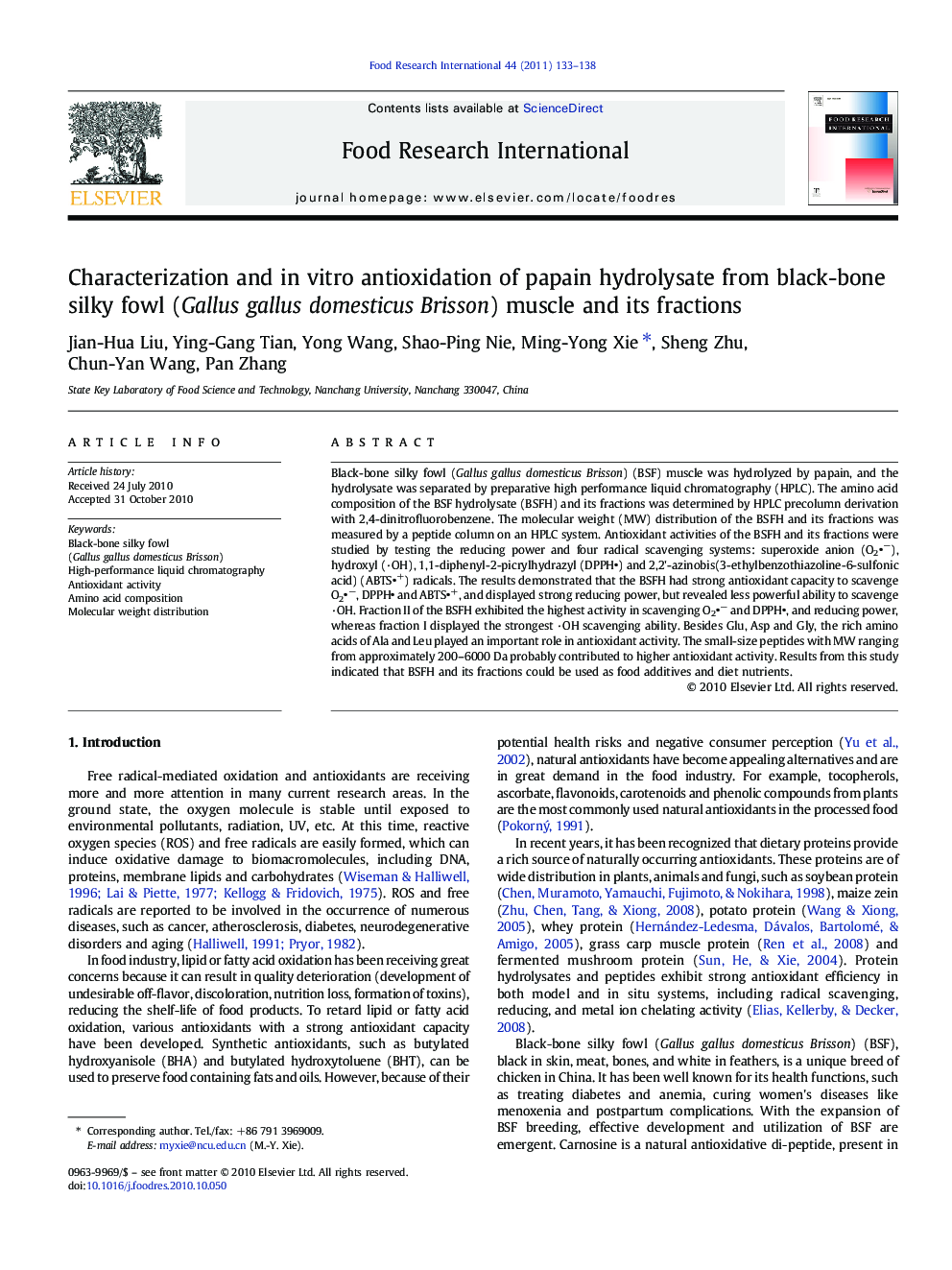| Article ID | Journal | Published Year | Pages | File Type |
|---|---|---|---|---|
| 6399928 | Food Research International | 2011 | 6 Pages |
Abstract
Black-bone silky fowl (Gallus gallus domesticus Brisson) (BSF) muscle was hydrolyzed by papain, and the hydrolysate was separated by preparative high performance liquid chromatography (HPLC). The amino acid composition of the BSF hydrolysate (BSFH) and its fractions was determined by HPLC precolumn derivation with 2,4-dinitrofluorobenzene. The molecular weight (MW) distribution of the BSFH and its fractions was measured by a peptide column on an HPLC system. Antioxidant activities of the BSFH and its fractions were studied by testing the reducing power and four radical scavenging systems: superoxide anion (O2â), hydroxyl (·OH), 1,1-diphenyl-2-picrylhydrazyl (DPPH) and 2,2'-azinobis(3-ethylbenzothiazoline-6-sulfonic acid) (ABTS+) radicals. The results demonstrated that the BSFH had strong antioxidant capacity to scavenge O2â, DPPH and ABTS+, and displayed strong reducing power, but revealed less powerful ability to scavenge ·OH. Fraction II of the BSFH exhibited the highest activity in scavenging O2â and DPPH, and reducing power, whereas fraction I displayed the strongest ·OH scavenging ability. Besides Glu, Asp and Gly, the rich amino acids of Ala and Leu played an important role in antioxidant activity. The small-size peptides with MW ranging from approximately 200-6000 Da probably contributed to higher antioxidant activity. Results from this study indicated that BSFH and its fractions could be used as food additives and diet nutrients.
Keywords
Related Topics
Life Sciences
Agricultural and Biological Sciences
Food Science
Authors
Jian-Hua Liu, Ying-Gang Tian, Yong Wang, Shao-Ping Nie, Ming-Yong Xie, Sheng Zhu, Chun-Yan Wang, Pan Zhang,
